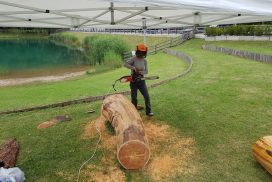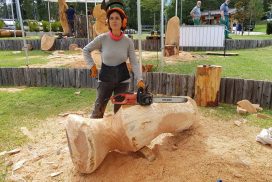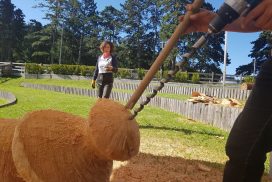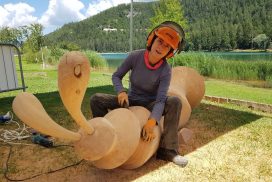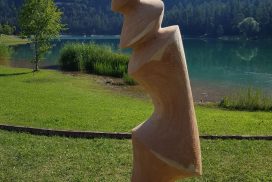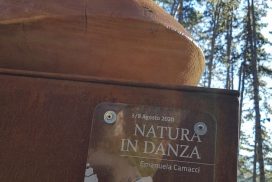Emanuela Camacci

We know the Artist:
Born in Rome in 1968, she graduated in Sculpture at the Academy of Fine Arts in Rome in 1990.
In 1992 she attended the stone sculpture course held by Professor Janez Lenassi at the Academy of Fine Arts in Salzburg, Austria. In 1994 you participated in a stone sculpture internship organized by the Budapest Academy of Fine Arts, held by master Adam Farkas, in Villany, Siklos, Hungary.
From 1990 to 1993 you worked in the laboratory of Costantino Buccolieri’s Opificio Romano, producing works by E. Cucchi, M. Paladino and ecclesiastical institutions, in the church of Fatima, Monte Carlo, etc.
You have collaborated with the Domus Dei Albano Laziale (RM) for the creation of sculptures and plaster prototypes on sacred subjects.
Since 2008 she has been teaching at the School of Ornamental Arts of the City of Rome as a teacher of the Mosaic Course.
In 2003 she was awarded an artist scholarship at Kunststation Kleinsassen, Fulda, Germany. You have participated in Artistic Meetings and Stone Sculpture Symposiums, winning prizes in various competitions and performed monumental sculptures in stone, wood and iron placed in public and private spaces. These include the sculpture “Bubbles of air” in the permanent collection of Cantina Cormòns, in Gorizia.
She was the winner of the public competition for artwork, scheme 2%, sculpture, and she placed the “mani” work in travertine in the atrium of the fire station in Rome.
In 2016 you installed the “Black Rain” work at the Maam Museum, Museo dell’altrave in Rome.
Realization for the Symposium of Predaia 2020:
The sculpture created by Emanuela has the title “Nature in dance”
The work is inspired by the flora and fauna of alpine nature, inspired by its beauty.
The shape evokes a body, but also a plant. Flora and fauna come together in total symbiosis. The figure moves slowly as in a dance, stretching the body in different directions. It is a living sculpture, in a visual and organic movement, different and original at the same time and as often nature does, it surprises us.
The symbolic reference to nature is highlighted in the shape of the drop-shaped flowers, which, full of energy and life, project themselves outside the main figure as in the period of flowering.
The sculpture expresses the strong relationship between nature and man.
The work as a source of inspiration for the conservation and protection of nature and the environment that surrounds us.
